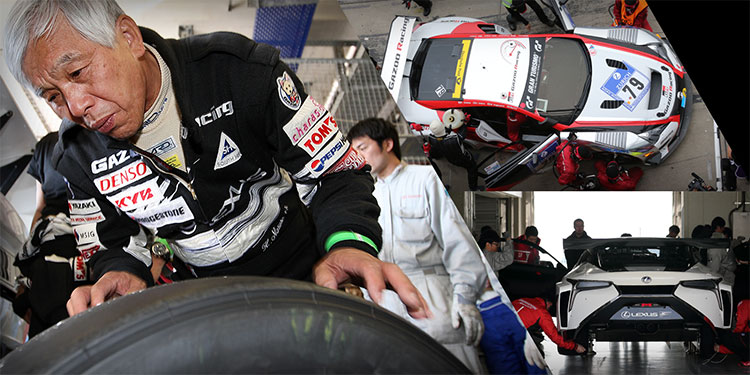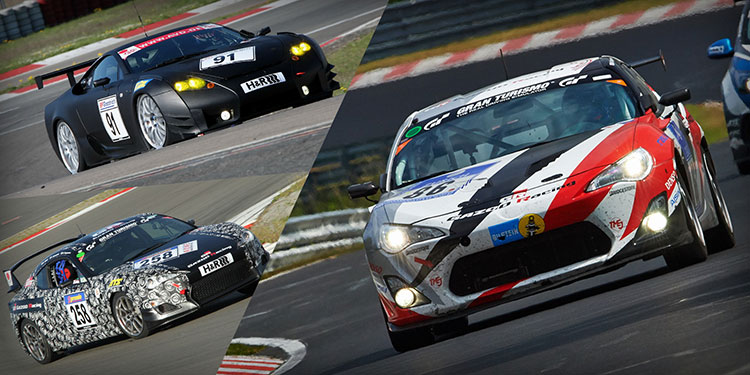The more it is driven, the more fearsome it becomes:
“The Green Hell”
Even professional drivers fear the Nürburgring. Popularly known as “The Green Hell,” the Nürburgring is a 20km circuit located in the northwest of Germany. There are some things that can only be experienced here—and that is why TOYOTA GAZOO Racing competes in the 24 Hours of Nürburgring.
The Nürburgring, which plays host to the 24 Hours of Nürburgring, is located in the northwest of Germany.
There are two tracks at the complex: the Grand Prix track is 5.1km in length, and hosts F1 and WEC races; the Nordschleife (“North Loop”) is 20.8km in length, and is combined with the Grand Prix track to form a 25km-long course on which the 24 Hours of Nürburgring is held.
While the Nordschleife is formally a circuit, its layout resembles typical regional European roads. One loop is 20.832km long, has a maximum elevation difference of 300m, and features more than 170 corners of varying lengths. It is an extremely diverse course, with some sections requiring low speeds, and others extremely high speeds.
A comparison with Japanese circuits reveals the vastness of the Nürburgring: Fuji Speedway is 4.563km long, with an elevation difference of 40m, and 16 corners; Suzuka Circuit is 5.807km, with an elevation difference of 40m, and 20 corners.
Racing circuits are typically covered with smooth road surfaces; however, due to issues with paving technologies when the surface was first laid in 1927, the surface of the Nürburgring is almost entirely uneven. It is enough to make drivers wonder whether any part of the circuit is flat at all. In addition, there is reduced traction due to dust, the course is narrow, and escape zones are rare.
Given that cars take off at some points, and that there are a number of blind, high-speed corners, it is perhaps more accurate to describe the Nordschleife as a one-way mountain pass than a circuit.
For the above reasons, the Nürburgring is said to be a living course that condenses all the world's roads into a single circuit, and is famed as one of the world's hardest courses.
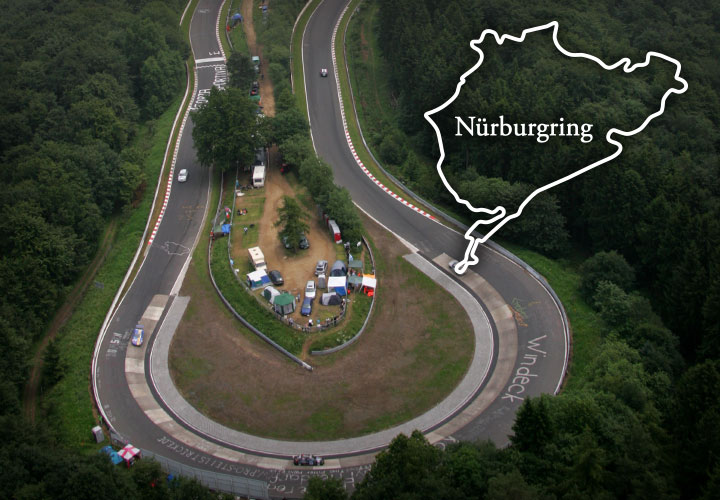
The more it is driven, the more fearsome it becomes.The driver Takeshi Tsuchiya
The Nürburgring can be driven by anyone who pays the course fee. However, those who say the Nürburgring is “fun” have not driven it properly. Indeed, the more it is driven, the more fearsome it becomes.
The driver Takeshi Tsuchiya commented: “When I first drove at the Nürburgring, it was more fun than anything. However, the more I raced, the more I realized how scary it was. Now, the ‘fun’ aspect has diminished, and I understand the importance of preparing thoroughly.”
Naoya Gamo, who has the greatest experience of the Nürburgring of any TOYOTA GAZOO Racing drivers, gave a similar assessment: “The first year I competed, I had a powerful sense of joy and curiosity at being able to drive at the Nürburgring. However, as I have competed more and more, I have seen various crashes, the speed of the race cars has increased, and I have learned to fear the circuit.”
The Nürburgring, which plays on the minds of even the most battle-hardened drivers, is also known as “The Green Hell.” It demands the utmost not only of the cars that run there but also of the drivers.
Toyota first visited the Nürburgring more than 40 years ago. Hiromu Naruse was 28 years old at the time, and visiting Europe to provide technical guidance. He participated in the 6 Hours of Nürburgring in a Celica 1600GT.
During an interview about his race, Naruse said: “When I first drove at the Nürburgring, I instinctively felt both that I had come to an incredible place and that we could use this place for development. However, no one at Toyota recognized the importance of Nürburgring. I think the first Toyota model to be evaluated at the Nürburgring was the original MR2. On the wonderful surfaces of Japanese circuits, it was only possible to understand about one-tenth of the car; the Nürburgring enabled us to see everything. It made it impossible to deceive ourselves.”
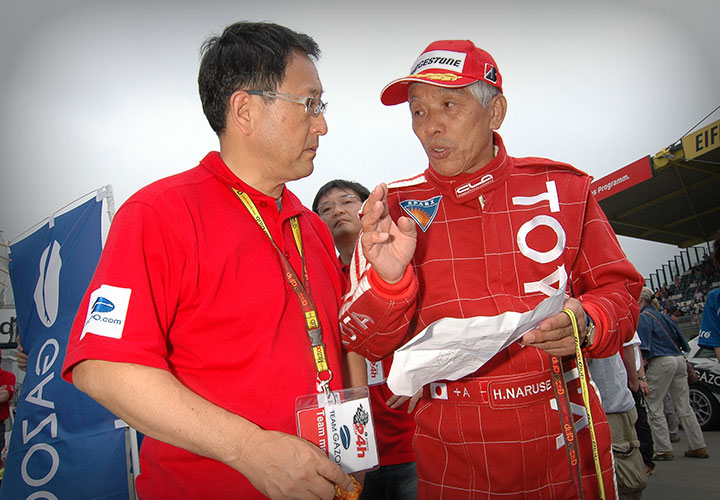
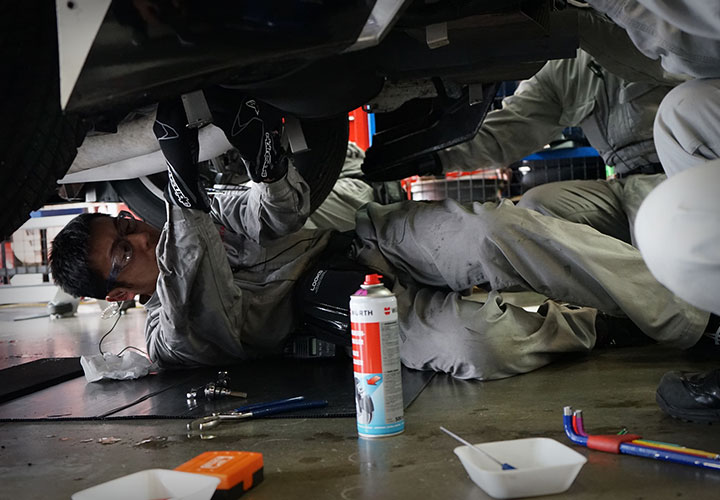
The Nürburgring is primarily known for the single-lap time trials carried out by production cars there. Yet, what is truly important is whether drivers are able to engage in dialogue with their vehicles.
In other words, cars must be “comfortable”, “easy to drive”, and “respond to driver input in a predictable manner at all times”, both in normal and extreme driving conditions. Drivers must not have to fight the vehicles while driving; instead, cars ought to respond to driver input as intended even when being driven with a single hand on the steering wheel. If they cannot do this, they do not have the capacity to run at the Nürburgring.
To this end, cars must not rely on electronic controls; rather, the basic performance of the vehicles must be improved.
Toyota started competing in the 24 Hours of Nürburgring from 2007—yet how does the company's participation lead to the making of ever-better cars?
According to Naruse: “Races are the ultimate stage for passing on techniques and developing human resources. What is important is that car-making is not debated using words and data; instead, discussions must center on actual vehicles that can be touched and seen at first hand.”
In other words, competing in the 24 Hours of Nürburgring, which is said to be the world's most demanding race, enables Toyota to refine its cars, people, and teams; the company therefore gains the ability to see the unique “flavor” of its cars—something that cannot be grasped via mere data-based, theoretical discussions—and this provides hints for the creation of ever-better cars.
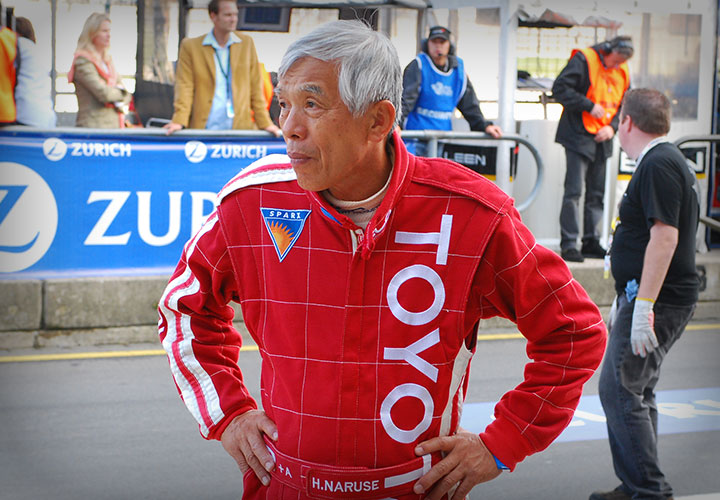
Generations of Toyota sports models have been refined at the Nürburgring. These include the A80 Supra, Altezza, LFA, 86, and the A90 GR Supra, which was recently resurrected for the first time in 17 years. In recent years, the company has also been testing standard models such as the C-HR at the circuit.
Toyota believes that refining vehicles through actual racing is the most direct route to the creation of ever-better cars and for this reason, it entered pre-launch prototypes of the Lexus LFA, and the Toyota 86 and C-HR, and GR Supra into the 24 Hours of Nürburgring.
It goes without saying that the Lexus LC, which will participate in the race from 2018 onward, incorporates a number of next-generation technologies that are intended to be used in future production cars. One of its missions therefore is to refine these technologies through actual racing.
Yasuo Hirata, employee of Toyota Motor Corporation first participated in the 24 Hours of Nürburgring in 2007, and has been chief mechanic for the team on numerous occasions since. He commented: “Someone once said to me, ‘Japanese customers don’t drive at the Nürburgring in those cars, do they?’ This is indeed true. However, we believe that making cars that can perform with peace of mind in the most extreme conditions leads to the development of cars that are fun, pleasant, and reliable to drive in everyday situations. We bring cars to the Nürburgring for testing while development is taking place. However, our aim is not to perfect the vehicle at this circuit; instead, we see the Nürburgring as a place to confirm that the vehicle can actually be driven with peace of mind—it is a sort of graduation test. If we can demonstrate at the Nürburgring that there are no issues, then it gives us confidence for proceeding with development that presumes various things at our own test courses, too. Whenever we come to the Nürburgring, we always make a great many realizations.”
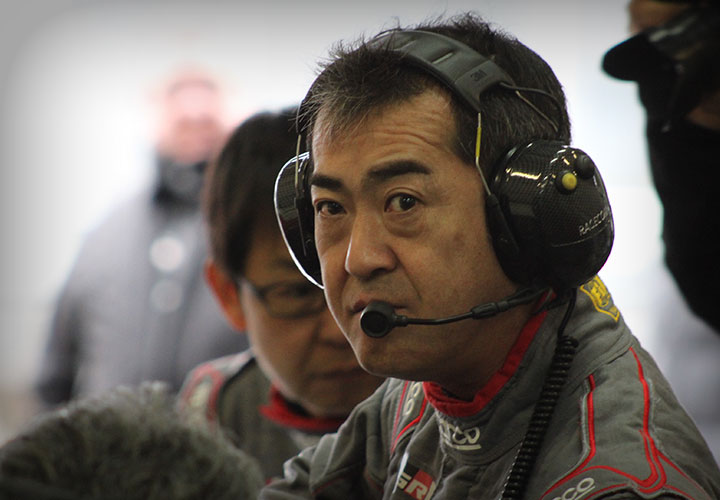
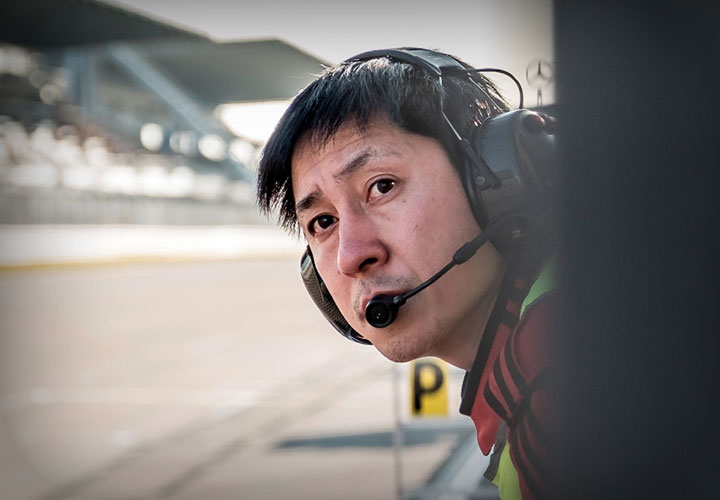
Toshiyuki Sekiya, employee of Toyota Motor Corporation, took on the role of chief mechanic for the Lexus LC at the 2018 and 2019 editions of the 24 Hours of Nürburgring, noted: “The Nürburgring is both a circuit and a condensation of every type of public road. Participating in a rigorous race on such a circuit places extreme stress on the vehicle, and a high rate of development is demanded due to the limited time available. As a result, if we want to learn how to focus on the creation of ever-better cars in a short timeframe, this is the ideal location. Naruse often said to us: ‘You can't come up with any ideas because you don’t experience any difficulties.’ When we go to the Nürburgring, we are faced with great number of difficulties, and this is an extremely important experience for us. This is not only true of racing cars but also of production cars. Having experienced the Nürburgring, we no longer have to ask ourselves, ‘is this enough?,’ when dealing either with vehicle improvements or our own personal feelings. Of course, we compete against rival cars when racing, and so the Nürburgring is a place where we become more attuned to the passion we have for our cars—be it a sense of disappointment or a greater awareness of the ‘challenging spirit.’”
In other words, the true significance of competing in the 24 Hours of Nürburgring is not that it enables Toyota employees to learn how to complete different tasks; rather, it is the creation of something from nothing, and the enhancement of human resources. In the short timeframe of a race, team members are subject to wide-ranging experiences—including failure—and are refined accordingly. Said differently: there can be no progress in the creation of ever-better cars without people.

